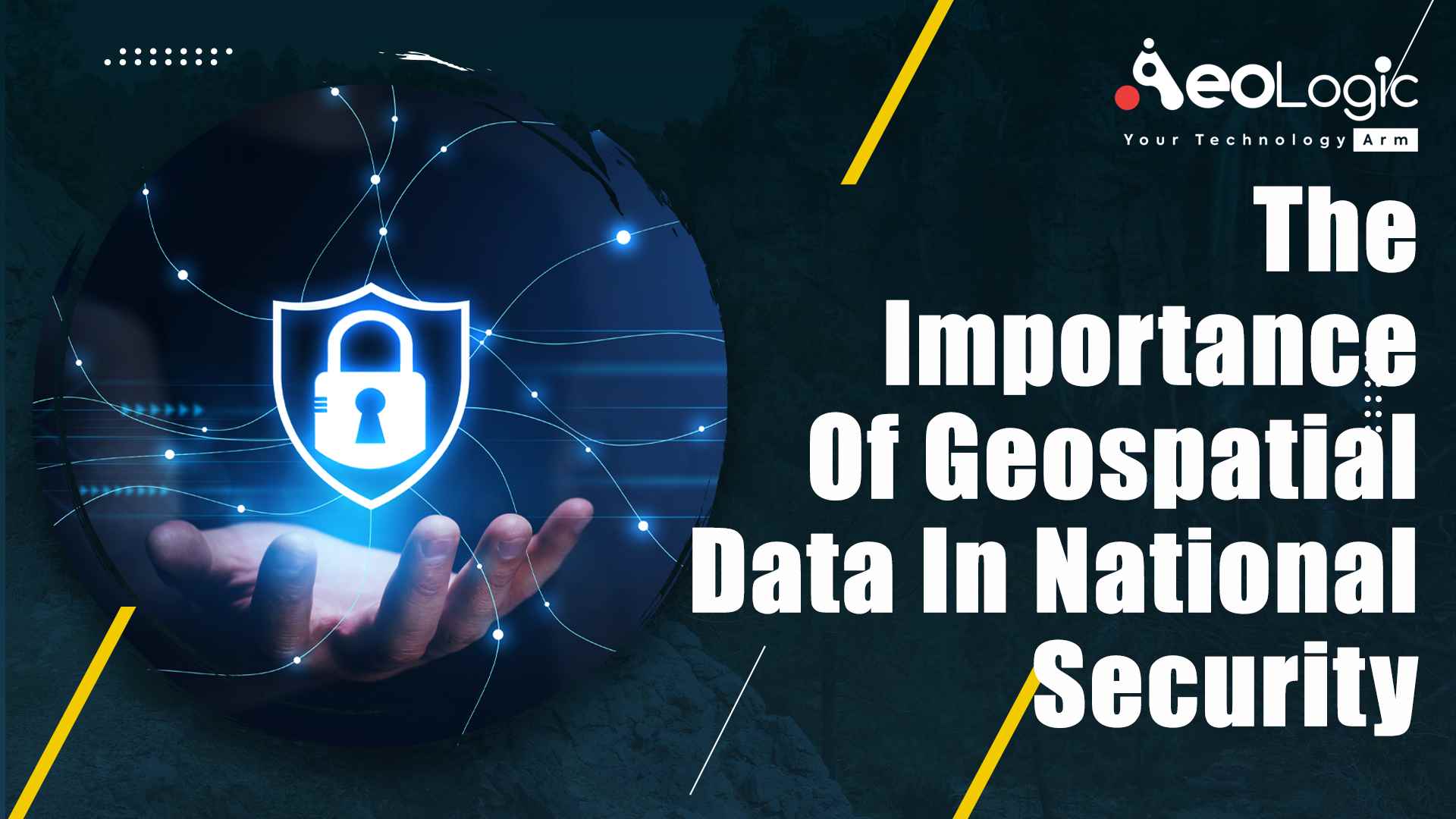Geospatial data, or data that is tied to a specific location, plays a crucial role in national security. It helps in identifying, analyzing, and responding to threats, as well as in planning and executing operations. In this blog, we will explore the various ways in which geospatial data is used in national security and the importance of its accurate and timely collection and analysis. From tracking the movement of enemy forces to identifying potential terrorist targets, geospatial data is a critical tool for keeping our country safe.
The Importance of Geospatial Data in National Security
The term “geospatial data” refers to data that has a geographic component, such as latitude and longitude coordinates. Geospatial data is used in a variety of applications, including mapping, surveying, navigation, and land management. In recent years, the use of geospatial data has become increasingly important in national security.
Geospatial data is used by the military for a variety of purposes, including planning missions, developing tactics, and conducting operations. Geospatial data is also used by intelligence agencies to track the movements of people and resources and to monitor activity in sensitive areas.
Also Read: How IoT Technology is Changing the Automotive Industry
Challenges of Geospatial Data in National Security
The use of geospatial data in national security is not without its challenges. One of the biggest challenges is the sheer volume of data that is available. Another challenge is the accuracy of the data. In many cases, geospatial data is collected by satellites, which can have limited resolution. In other cases, geospatial data is collected by ground-based sensors, which can be subject to interference from the environment.
Despite the challenges, the use of geospatial data in national security is likely to continue to grow in importance. The availability of new and more powerful sensors, and the development of new analytical methods, will continue to provide new opportunities for the use of geospatial data in national security.
The Role of Geospatial Data in National Security
The national security of any country is of utmost importance. The safe and secure functioning of the state machinery depends on the availability of accurate and up-to-date information about the country’s geographical features. This is where geospatial data comes in.
In the past, national security agencies have relied heavily on satellite imagery and other forms of remote sensing data to obtain information about potential threats. However, this data is often expensive and difficult to obtain in a timely manner. Geospatial data, on the other hand, is more readily available and can be collected more quickly and easily.
Geospatial data is playing an increasingly important role in national security. It is being used to track the movements of people and vehicles, monitor the activities of suspected terrorists, and to identify potential threats to the country.
The Benefits of Geospatial Data in National Security
As the world becomes more connected, the importance of geospatial data in national security is only increasing.
There are a number of benefits that geospatial data can provide when it comes to national security.
It can help to provide a clear picture of what is happening on the ground in real time. This is incredibly important for things like disaster response and humanitarian aid efforts. Geospatial data can also be used to track the movements of people and objects, which is valuable for things like border security and law enforcement.
Another benefit of geospatial data is that it can be used to help predict future events. This is done by analyzing patterns and trends that can be gleaned from the data. This can be incredibly valuable for things like disaster preparedness and counterterrorism efforts.
The benefits of geospatial data in national security are clear. This data can help to provide a clear picture of what is happening on the ground, track the movements of people and objects, and predict future events.
The Importance of Geospatial Data in Homeland Security
In recent years, the importance of geospatial data in homeland security has become increasingly apparent. Geospatial data is vital for understanding the physical environment in which we operate and for developing and implementing effective security strategies.
There are a number of reasons why geospatial data is so important in homeland security.
First, geospatial data can be used to identify potential threats and vulnerabilities. By understanding the physical environment, we can better identify potential targets for attack and develop strategies for protecting those targets.
Second, geospatial data can be used to monitor and track the activities of potential threats. By understanding the patterns of movement and activity of potential threats, we can better anticipate and respond to threats.
Third, geospatial data can be used to support investigations and prosecutions. By understanding the relationship between people, places, and events, investigators and prosecutors can better build cases and secure convictions.
The importance of geospatial data in homeland security is clear. Geospatial data can be used to support a wide range of homeland security activities, from identifying potential threats to responding to disasters. Geospatial data is a vital tool for keeping our nation safe.
Also Read: Here’s How IoT can Manage EV Transition in India
The Use of Geospatial Data in National Security
The use of geospatial data is also becoming increasingly important in the field of disaster response. The ability to track the movement of people and assets in real-time is becoming more and more essential in the age of natural disasters. Geospatial data can be used to track the movement of people and assets during a disaster, as well as to monitor the progress of relief efforts.
The use of geospatial data is also becoming increasingly important in the field of crime scene investigation. The ability to track the movement of people and objects in real-time is becoming more and more essential in the age of high-tech crime.
Also Read: Role and Impact of IoT Technologies in the Education Industry
Conclusion
Geospatial data is a vital tool in national security and plays a crucial role in identifying, analyzing, and responding to threats. The accurate and timely collection and analysis of this data can help in making informed decisions and planning effective operations.
As technology continues to advance, it is essential that we continue to invest in the development of geospatial data and the capabilities to process and analyze it. In doing so, we can ensure that our national security agencies have the information they need to keep our country safe. This is why geospatial data is an important aspect of national security and must be given the attention it deserves.
Keeping your fulfillment process steady is made easier with the use of technology for effective automation solutions in your business. Get in touch with Aeologic Technologies right away to see how it can benefit your company.
Also Read: 10 Ways to Use Artificial Intelligence to Improve Business Processes
Related Blogs:
- How AI/ML Can Change the Public Transportation Industry
- Transforming Business With Digital Technology in the Oil Palm Industry in India
- Importance of Digital Asset Management in the Retail Industry
- How AI is Transforming the Agriculture Industry
- 10 Ways to Use Artificial Intelligence to Improve Business Processes
- The Future of IoT Technology in Convenience Stores
- Building Manufacturing Resilience Through AI and ML

I’m Deepika Pandey, an SEO strategist and content writer with 6+ years of experience. I create SEO-friendly content that drives traffic and engages readers. I combine data insights with creativity to help businesses grow their online presence effectively.





